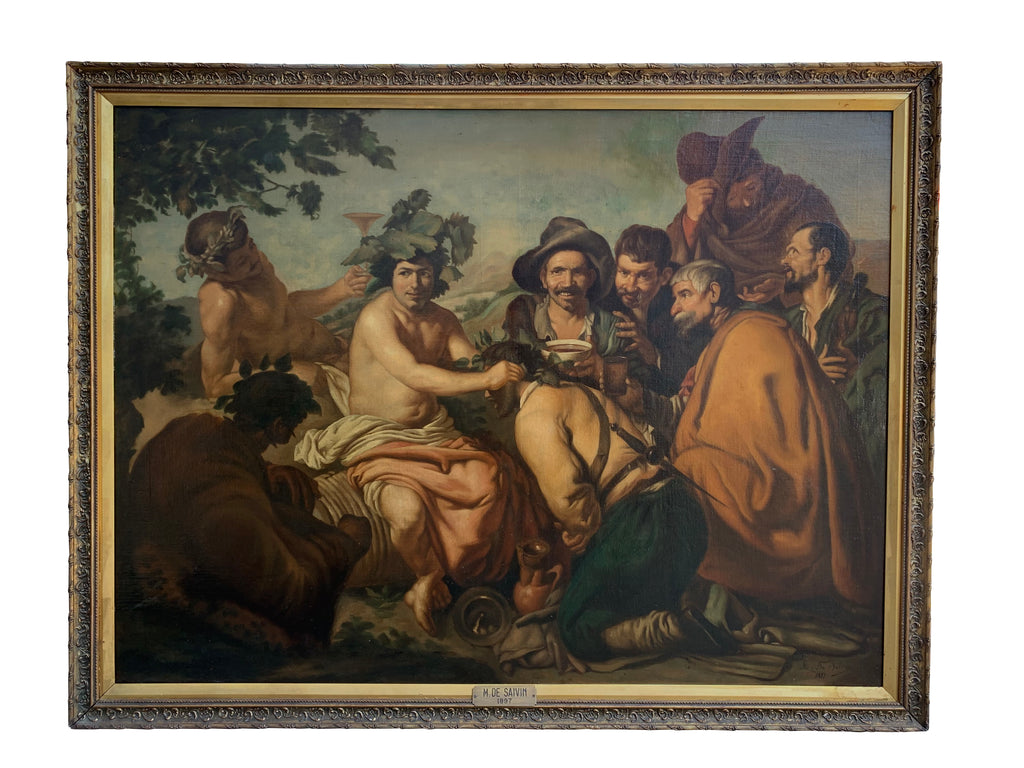THE TRIUMPH OF BACCHUS AFTER VELAZQUES OIL ON CANVAS
$14,500.00
"The Triumph of Bacchus," an oil painting on canvas from the late 19th century, is inspired by Diego Velázquez's work. It carries the signature and date of M. De Saivin, 1897.
This painting likely draws inspiration from Velázquez's famous work, depicting the exuberant revelry and celebration associated with Bacchus, the Roman god of wine and festivity. Velázquez's original painting, known for its vivacity and rich detail, often portrays Bacchus surrounded by a lively group, reveling in the pleasures of wine and merriment.
The artist, M. De Saivin, in 1897, might have recreated Velázquez's composition, imbuing it with their interpretation and artistic style. This homage to Velázquez's masterpiece might capture the essence of Bacchus's triumphant revelry and the spirited atmosphere of the original work.
Paintings created in homage to renowned masterpieces often carry their own artistic value and interpretations, paying tribute to the mastery of the original while reflecting the unique perspective and skill of the artist creating the homage.
Dimensions:
Canvas: 35.5" x 48" (90 cm x 122 cm)
Framed: 40.5" x 53" (103 cm x 134 cm)









